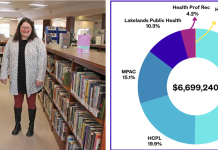Parks Canada’s water management team says an extended trend of below-average precipitation has impacted watersheds across the Trent-Severn Waterway, including the reservoir lakes.
“Most lakes are well below long-term average water levels. Most of the reservoir lakes remain at their respective winter set dam configuration. The Gull River reservoirs are 35 per cent full, and the Burnt River reservoirs are 35 per cent full,” the Trent-Severn Waterway said on Nov. 5.
They added the central reservoirs are 40 per cent full and The Gull and Burnt River flows are significantly below average. They added Parks Canada continues to actively monitor water levels, flows, and weather forecasts across TSW, since these factors are used to determine dam operations on a daily basis.
The TSW noted rainfall amounts for September and October have contributed to 25-75 per cent less precipitation compared to the long-term averages. The months of September and October contributed to values that are less than 50-75 mm than the long-term mean. The five-day forecast suggests a temperature trend above the freezing mark and about 3-16 mm of rain.
“The extended low amounts of precipitation have decreased flows and water levels at most locations. The most recent rainfall events were spatially variable and not significant, as a result currently, flows remain below average and receding across the Trent-Severn Watershed. The current forecast indicates that water levels and outflows may continue to decline and are subject to change depending on amounts of rain in the forecast.”




